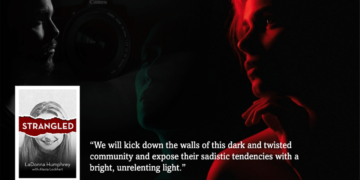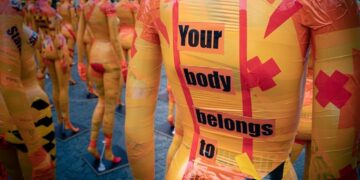It’s intriguing isn’t it? A 20th-century cold case named after the color of a bicycle. That’s what caught my attention and I am glad it did. This is a case that has gone unsolved for almost 100 years, with twists and turns and mystery all leading back to the same question: who did kill 21-year-old Bella Wright on that quiet country lane in 1919?
Early 20th-century England was a time of changes and development. In 1916 the first female police officer was appointed and in 1918 women were allowed the vote. Wages were low and poverty was rife. Vacuum cleaners and washing machines had yet to become mainstream with only the rich being able to afford them and in 1919 the First World War had just ended. Fears were abundant that returning soldiers trained in aggression would transfer such violence onto the streets of their hometowns and onto their families.
A report in the Times in May 1919 stated a recent spate of robberies was due to men who had “grown callous after four years experience of killing”. The Commissioner of the Metropolitan Police at the time, General Sir Nevil Macready, expressed his concern for the wives of returning soldiers fearing violence from their husbands over the previous “just a clip under the ear”.
On 5th July 1919, Bella Wright was 21 years old and lived in a village, Little Stretton, just outside Leicester in England. A picturesque place full of country walks and quaint lanes in the surrounding rolling countryside. On that evening Bella had decided to visit her uncle a few miles away and set off on her bicycle for the short journey. Somewhere along the route, her trusted bicycle malfunctioned and she found herself struggling with a loose wheel.

By chance, a man rode up next to her on a distinctive green bicycle with unusually shaped handlebars and offered his assistance. Unable to provide the wrench required to fix the wheel, he offered to travel with her to her uncle’s cottage to ensure she got her bicycle fixed. The “unnerving” man according to Bella’s uncle, waited for her outside the cottage and they rode off together to continue their journeys.
This was 8.50 pm in the evening and Bella was expected home soon after. Bella, however, did not arrive home and at 9.20 pm a local farmer, Joseph Cowell found her crumpled body in the middle of the country lane.
A Police Inquiry – Accident or Murder?
Police initially thought this had been a tragic accident and the young girl had fallen off her bicycle and hit her head. No footprints were found around her to suggest someone else may have been present and the only other evidence spotted was a smear of blood on the farm gate near her body and a dead bird nearby.
Such a crime scene today would have no doubt yielded many clues through forensic science and preservation of evidence, but this was 1919, forensic science for crime investigation had yet to be invented and procedures for preserving evidence were a thing of the future.
In 1919, police officers arrived at the location, had a close look while no doubt trampling over the scene with their heavy police-issue boots picked up anything they thought might be relevant, and left. The advancements in forensic science and crime scene investigation were still in their infancy. An eager police constable by the name of Alfred Hall was curious about this mysterious death and decided to return to the scene the next morning to have another look.
Searching the ground where Bella Wright’s body was found he discovered a bullet, just underneath the top layer of soil. Convinced this was connected to her death he raced to the mortuary. There he discovered a gunshot wound on the left side of her head. This was no accident he declared, this was murder.
Who Was The Owner Of The Green Bicycle?
After reviewing her movements that evening and gaining knowledge of her meeting with the mysterious man on the green bicycle, police theorized she had for some reason tried to flee from him that night, taking a narrow road in an attempt to make it home safe.
They thought the man had taken a different route to cut her off, meeting her at the farm gate. He had then shot Bella Wright dead and fled the scene. The hunt began for the mystery man on the green bicycle. Wanted posters were issued for an average-height, dark-haired man, aged 30-40 years in an attempt to identify him. Alerts were also put out for the distinctive bicycle he was riding that night in the hope it would lead them to their main suspect.
For seven months no leads were found and the case was beginning to look like it would remain unsolved. Through a stroke of luck, in February 1920 a boat pulling coal up the River Soar in Leicestershire snagged its tow line on an object underneath the water’s surface. This object turned out to be the handlebars of the elusive green bicycle the police had been searching for.
The remainder of the bicycle was also found and a local laborer came forward to say he had witnessed a man throwing both parts into the river some days earlier. Despite clear attempts to remove the serial numbers on the metal, enough remained for police to identify the owner through purchase records as 34-year-old Ronald Light.
An Arrest – He’s Been Caught!
Ronald Light was arrested on 4 March 1920 and it was quickly determined he did indeed match the description of the mysterious man with Bella Wright on the evening of her death. In another twist to the case, on 19 March a gun holster and a collection of bullets were found in the local canal, bullets which were matched to the bullet which killed Bella Wright.
Ronald Light upon questioning admitted he met Bella on that country lane and assisted her with her bicycle accompanying her to her uncle’s cottage. However, he claims after they rode off together he headed off towards Leicester while Bella continued on her way home. Ronald Light insists he left Bella Wright in good health on that evening.
Ronald Light was a former schoolteacher and soldier with a checkered past. He had been fired from a number of positions, including a railroad worker and a farmhand, for inappropriate behavior and a seemingly unhealthy interest in fire after setting light to an office and a block of haystacks.
He joined the army during World War I but was dishonorably discharged for reasons unknown. He re-enlisted soon after as a private but came home after suffering shell shock. At the time of the murder, he was working as a maths teacher at a local school. There have also been varied reports of inappropriate behavior towards young girls although no charges were ever brought against him.
A 1920’s Trial For Murder
Ronald Light stood trial for murder at Leicester Castle in a trial which began on 9th July 1920. Thought to have been built around 1700, Leicester Castle was built over the Roman town walls and was mainly used as a courthouse with trials taking place in the imposing Great Hall.
His defense was led by Sir Edward Marshall-Hall, a successful barrister who was known as “The Great Defender”. Much like the renowned defense attorney Clarence Darrow in the trial of Leopold and Loeb in 1924, Hall mounted an excellent defense.
He cleverly managed to throw serious doubt on the idea that Ronald Light was the man responsible for the murder of Bella Wright. Although his client openly admitted the gun holster, bullets, and bicycle were his, he adamantly denied the killing. Hall claimed the bullet which killed Bella could have come from a firing of a gun from some distance away, using the dead bird found near the scene as a possible reason and, he said, it could not be said with any certainty it came from Ronald Light.
He argued a close-up shot, as in the police theory, would have caused much more injury to the young girl than what was found. He highlighted a lack of motive in the case, focusing on the fact there was no assault and no robbery involved and he introduced the idea that another mystery person, somewhere in the shadows, was involved and was the one responsible for the murder.
He also placed much emphasis on the fact that no one saw Ronald Light on that road with Bella at the time of the murder and therefore could not prove he was the murderer. The jury were mightily impressed with the defense put forward by Edward Marshall-Hall and they acquitted Ronald Light of all charges on 12 June 1920.
With the only suspect in the case acquitted and declared innocent, the family of Bella Wright and the people of Little Stretton were left scratching their heads. Was it really an accidental shooting from afar or was Ronald Light really the killer? Those mysterious 30 minutes on the 5th July 1919 became the most talked about period of time in local history.
Records indicate that while Bella’s murder was puzzled over, Ronald Light left the area, got married, and changed his name. He was never recalled for the murder and he died in Kent in 1975 aged 89.
A Mysterious Note
In amongst the records of this case lies a note allegedly penned by Superintendent Levi Bowley three days after Light’s acquittal for murder. It states that he got on well with Light when he was being held in prison before the trial and they had a good friendly relationship.
It claims Light asked him to keep this information to himself and if he did not, Light would lie and claim he never said anything. Light, the note claims, then went on to confess to the murder of Bella Wright.
“I did shoot the girl but it was completely accidental, we were riding quietly along….I had my revolver in my raincoat pocket and we dismounted for her to look at it…I had no idea there was a loaded cartridge in it…her hand was out to take it when it went off. She fell and never stirred….I was frightened and altogether unnerved and I got on my bicycle and rode away.”
Most believe this note is not authentic and if indeed this confession was made to a Superintendent in the police while awaiting trial, such Superintendent would have reported it sooner. Other theories are that it was planted in amongst the evidence files to make the case more interesting or possibly as a strange kind of joke.
This is a case that has fascinated and puzzled people in equal measure. In April 2013, six third-year performing arts students from De Montfort University in Leicester recreated the trial of Ronald Light in the same courtroom at Leicester Castle. They undertook time-consuming research of the actual court transcripts to make their re-enactment as accurate as possible.
Their performance was opened to the public who could go to the same courtroom where the trial was held and watch the events unfold. His theory on what happened that night is that Light did indeed murder Bella Wright and it was a crime of opportunity. With an interesting past of inappropriate behavior towards women, Bella may have picked up on something not quite right with the gentleman so eager to help her out, panicked, and tried to flee.
He cuts her off, emerging from the hedge when she least expects it and she falls off her bicycle. On the ground she is vulnerable and Light has all the power. He uses this power and indulges in his fantasy. A clear case of guilt, according to Professor Hughes.
Who Did Kill Bella Wright in 1919?
Nearly 100 years on and the case of Bella Wright remains unsolved. Two books have been written about the events of that night in 1919, both coming to opposite conclusions.
The Green Bicycle Case by HR Wakefield published in 1930 claims Ronald Light was innocent and the Green Bicycle Murder by C Wendy East in 1993 claims Ronald Light was guilty. The holster and bullets found in the canal were auctioned at London’s Christie’s Auction House in 1987 and purchased by an anonymous buyer for $6000. The infamous green bicycle was mounted on the wall of a local bike shop for many years but has today disappeared, with no one appearing to know what happened to it.
Many people believe Ronald Light was guilty and should never have been acquitted in 1920, whereas others believe he was innocent and a mysterious other was the cause of Bella Wright’s untimely death.













































This is the subject of a Cold Case Jury book. After sifting the evidence and reading how Bella might have died according to three theories, readers can deliver their verdicts online. The three possible verdicts are misadventure, manslaughter or murder. The current poll is very close.
Hi Tony, what a wonderful idea! I think giving readers the opportunity to decide for themselves what happened in such cold cases and what verdicts they would give based on the evidence available is fantastic. I know what my verdict on this case would be. For those interested, go check out http://www.coldcasejury.com/case04/reading.asp for the Green Bicycle Mystery!